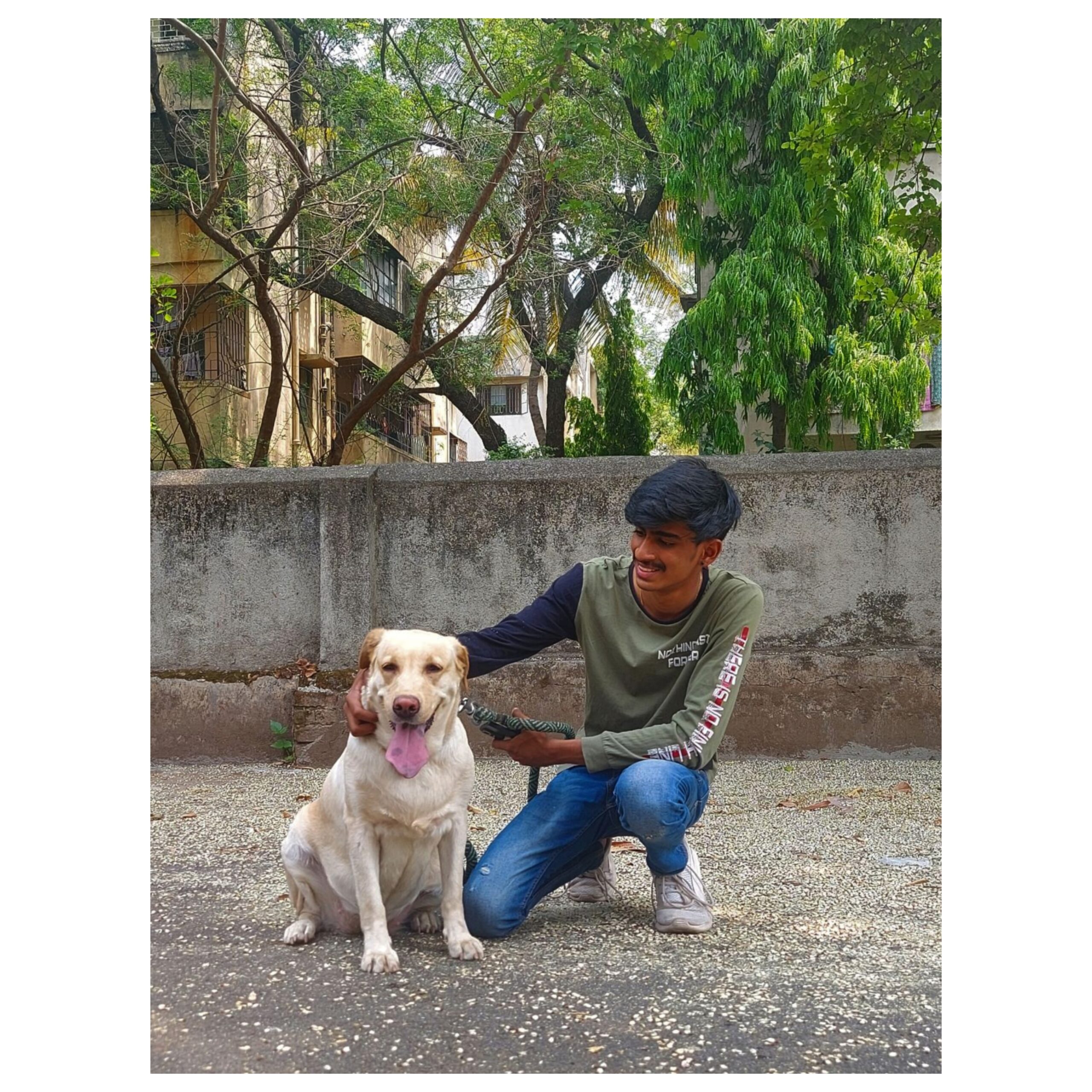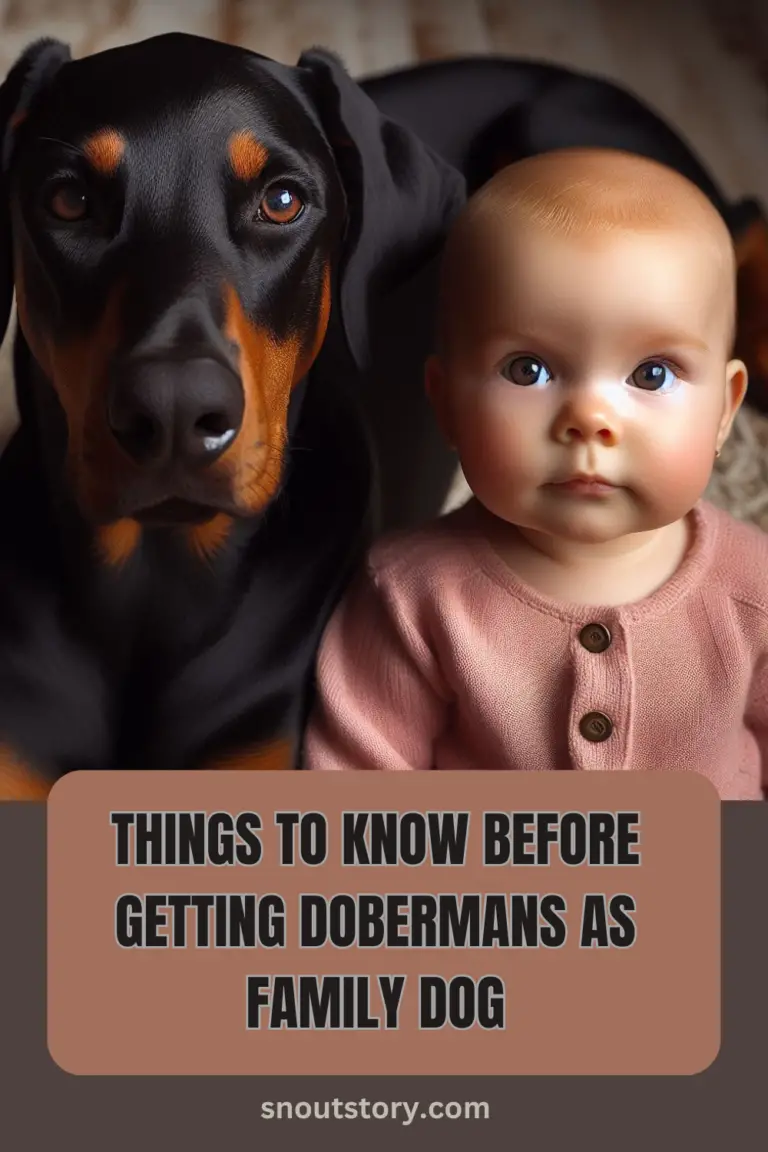It is important for both enthusiasts and potential owners to comprehend the size and weight features of the Doberman Pinscher breed. These magnificent dogs are well-known for their powerful size and athletic physique, which combine to make them both eye-catching and intimidating companions.
We go into the details of Doberman physical characteristics in this comprehensive review of size and weight, providing insight into the usual height and weight ranges seen in this breed.
From exploring how their size contributes to their unique appearance to understanding the factors influencing variations within the breed, this exploration aims to provide invaluable insights for those intrigued by these magnificent dogs.
Whether you’re a prospective owner seeking to understand what to expect or simply an admirer curious about their physical traits, this discussion will illuminate the fascinating world of Doberman Pinscher size and weight.
Average Height of Doberman Pinschers

The average height of adult Doberman Pinschers typically ranges between 24 to 28 inches at the shoulder, with males generally being larger than females. This breed is known for its elegant and athletic build, standing tall and proud with a well-proportioned body.
However, it’s essential to note that individual variations may occur, influenced by factors such as genetics, diet, and exercise. While these measurements provide a general guideline, it’s crucial for owners to focus on maintaining their Doberman’s overall health and well-being rather than solely fixating on specific height measurements.
Regular veterinary check-ups and a balanced lifestyle can help ensure that your Doberman remains healthy and happy, regardless of their exact height.
Ideal Weight Range for Dobermans
Understanding the ideal weight range for Dobermans is crucial for maintaining their health and well-being. While individual variations exist based on factors like age, gender, and activity level, the average weight range for adult Dobermans typically falls between 60 to 90 pounds (27 to 41 kilograms) for males and 50 to 75 pounds (23 to 34 kilograms) for females.
However, it’s important to note that these figures serve as guidelines rather than strict rules, as some Dobermans may naturally fall outside these ranges without any health issues. Monitoring weight regularly, providing a balanced diet, and ensuring regular exercise are essential components of keeping Dobermans within their ideal weight range and promoting their overall health and vitality.
Growth and Development Stages
Understanding the growth and development stages of your canine companion is essential for providing proper care and support throughout their life. From the moment a puppy is born, they embark on a journey of physical, mental, and emotional development.
The first few weeks are crucial for their survival, as they rely on their mother for nourishment and warmth. As they grow older, puppies go through various milestones such as opening their eyes, learning to walk, and starting to explore their surroundings.
- Newborn Stage: Puppies are born blind, deaf, and completely dependent on their mother for care. They spend most of their time sleeping and feeding, relying on the warmth and nourishment provided by their mother’s milk.
- Transitional Stage (2-4 weeks): Puppies begin to open their eyes and ears, and they start to become more aware of their surroundings. They may start to crawl and explore their immediate environment within the whelping box.
- Socialization Stage (4-12 weeks): This is a critical period for socialization, where puppies learn how to interact with humans and other animals. They become more playful and curious, exploring their surroundings and interacting with littermates.
- Juvenile Stage (3-6 months): Puppies experience rapid growth during this stage and may become more independent. They begin to teethe, and their adult teeth start to come in, leading to chewing behavior. Training and socialization are important during this stage to prevent behavioral issues later on.
- Adolescent Stage (6-18 months): Puppies reach sexual maturity during this stage, and their growth rate starts to slow down. They may exhibit rebellious behavior and test boundaries. Consistent training and reinforcement are crucial during this period to establish good behavior habits.
- Young Adult Stage (18 months to 3 years): By this stage, most dogs have reached their full physical maturity. They are generally more settled in their behavior but may still have bursts of energy and playfulness. Training should continue to reinforce good behavior and maintain socialization skills.
- Adult Stage (3 years and older): Dogs are considered adults at this stage and have settled into their adult temperament and behavior. They may require adjustments to their diet and exercise routine to maintain their health and prevent obesity. Regular veterinary check-ups become increasingly important to monitor for any age-related health issues.
During adolescence, typically between six months to two years of age, dogs undergo rapid growth spurts and may exhibit behavioral changes as they transition into adulthood. Proper nutrition, regular veterinary check-ups, and plenty of socialization and training during these formative stages are key to ensuring a healthy and well-adjusted adult dog.
Factors Influencing Size Variation in Dobermans

Various factors contribute to the size variation seen among Doberman Pinschers. Genetics play a significant role, as dogs inherit traits related to size from their parents. Breeding practices also influence size variation, as some breeders may selectively breed for larger or smaller individuals.
Additionally, nutrition during puppyhood and adolescence can impact growth and development, with proper feeding and diet contributing to healthy size attainment. Environmental factors such as exercise levels and living conditions can also affect a Doberman’s size, with adequate exercise promoting muscle development and overall fitness.
Finally, health issues or genetic abnormalities may influence size variation, as certain conditions can either stunt growth or cause abnormal growth patterns.
Comparison: Male vs. Female Dobermans
When comparing male and female Dobermans, there are several notable differences to consider. In terms of size, male Dobermans tend to be larger and heavier than females, with males typically weighing between 75 to 100 pounds and females weighing between 60 to 90 pounds.
Additionally, males often have a more muscular build and broader head compared to females. Temperament-wise, both genders share similar traits such as loyalty, intelligence, and protectiveness, but there can be variations in behavior. Females are often described as more independent and territorial, while males may exhibit more dominance and assertiveness, especially towards other male dogs.
However, individual personality and training play significant roles in shaping a Doberman’s behavior regardless of gender. Ultimately, whether to choose a male or female Doberman depends on personal preferences, lifestyle, and the specific characteristics desired in a canine companion.
Doberman Pinscher Temperament and Traits (Click Here To Read)
Recognizing Healthy Body Condition
Recognizing a healthy body condition in your dog is crucial for their overall well-being. One of the key indicators of a healthy body condition is maintaining an ideal weight for their breed and size.
When you look at your dog from above, you should be able to see a distinct waistline behind the ribs, and when viewed from the side, the abdomen should tuck up towards the hind legs. You should also be able to feel their ribs easily without them being too prominent or obscured by excess fat. A healthy coat, bright eyes, and good energy levels are also signs of a well-maintained body condition.
Regular veterinary check-ups can help ensure that your dog remains in optimal health, as your veterinarian can provide guidance on nutrition, exercise, and any specific health concerns based on your dog’s individual needs.
Monitoring Weight and Size Changes
Monitoring weight and size changes in your dog is an essential aspect of responsible pet ownership. Regularly weighing your dog and tracking their growth over time can help you detect any potential health issues early on.
Sudden changes in weight or size, such as unexplained weight loss or rapid weight gain, could indicate underlying health problems that require veterinary attention. Additionally, keeping an eye on your dog’s body condition and overall appearance can provide valuable insights into their health and well-being.
By maintaining a proactive approach to monitoring your dog’s weight and size, you can ensure that they remain healthy and happy for years to come.
Breeder’s Role in Size and Weight Management
A responsible breeder plays a crucial role in size and weight management of puppies from birth to adoption. By carefully selecting breeding pairs based on their genetics, temperament, and health, breeders can influence the overall size and weight of the offspring.
Additionally, providing proper nutrition, veterinary care, and socialization during the critical early development stages can contribute to healthy growth and development. Moreover, reputable breeders educate prospective owners about the importance of maintaining an appropriate weight for their Dobermans throughout their lives, offering guidance on nutrition, exercise, and regular veterinary check-ups.
Ultimately, the breeder’s dedication to ethical breeding practices and ongoing support significantly impacts the long-term health and well-being of the dogs they breed.
Recommended
8 Super-Foods to Ensure Your Doberman Lives a Long-Life
Do Doberman’s Make Good Guard Dogs – Are They Aggressive?
Do Dobermans Make Good Family Dogs? 8 Surprising Facts
Doberman Pinscher Puppy Training and Socializing (A Complete Guide)
Doberman Pinscher Temperament and Traits – Everything New Owner Should Know
The Doberman Pinscher: Complete Breed Guide

Vedant Narvekar is an experienced digital marketing expert with a profound love for nature and animals. With a career rooted in leveraging online platforms to drive engagement and promote meaningful causes, Vedant’s passion for animals inspired him to start Snout Story—a blog dedicated to educating people about pet keeping and sharing proper knowledge about caring for animals. Drawing on his expertise in digital marketing, Vedant utilizes his platform to advocate for responsible pet ownership, providing valuable insights on pet care, training, nutrition, and more. Through Snout Story, Vedant aims to empower pet lovers with the information they need to provide the best possible care for their furry companions, while also fostering a deeper appreciation for the natural world and the creatures that inhabit it.







